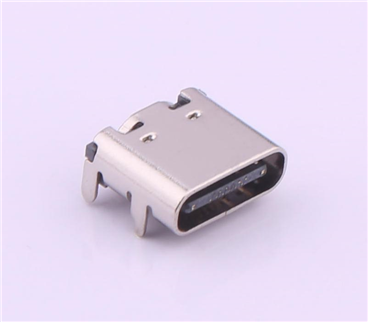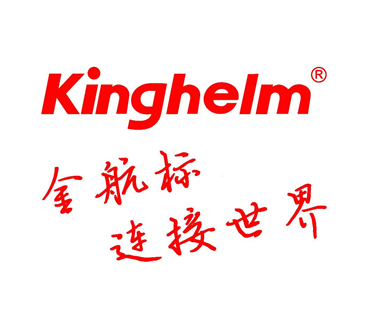Interactive evolution of 5g technology and intelligent logistics supply chain

Wen / Liu Dacheng, vice president of Internet Industry Research Institute of Tsinghua University, director of logistics industry research center and doctoral supervisor
01
5g technology and its application
On June 6, 2019, the Ministry of industry and information technology officially issued 5g commercial licenses to China Telecom, China Mobile, China Unicom and China Radio, film and television, marking that China has entered the "first year of 5g commerce" in 2019; Subsequently, 5g mobile phones were successively launched and listed. In 2020, the "new infrastructure" put the construction of 5g infrastructure in the first place. At the same time, the three operators promised to complete the construction of 550000 5g base stations in 2020, and it is expected that the number of 5g base stations will reach 5.5 million in 2025... It seems that the 5g era has really come.
5g technology is an upgraded version based on 3G / 4G technology. At the working meeting of the global standardization organization - the Third Generation Partnership Program (3GPP) held in Phoenix, USA in September 2015, it was officially proposed that the next generation radio technology will develop in three directions: enhanced broadband (embB), large-scale machine communication (mmtc) and high reliability and ultra-low delay communication (urllc).
In June 2018, the 5g NR independent networking SA standard was officially introduced, reducing the air interface delay to 1ms, the peak rate to 1GB / s, and the user experience rate to 100MB / s under continuous wide area and high mobility.
5g Super bandwidth, i.e. enhanced communication bandwidth scenario (embB), means that its G-bit super access rate has exceeded the basic rate of Internet access and video communication application traffic, its congestion and delay also tend to zero, and end users can feel the network with unlimited traffic.
5g mass Internet of things (mmtc) refers to adopting network automation technology and based on service architecture to realize the management and security assurance of the whole life cycle of massive Internet connected equipment.
5g instant reliable communication (urllc) ensures the ability of high reliability and ultra-low delay communication, so as to realize the real telepresence of long distance on the global network.
02
5g high cost promotes the implementation of industrial Internet
According to China 5g economic report 2020, by 2025, the penetration rate of 5g users to 4G will reach 48%. By 2030, the total output directly driven by 5g will reach 6.3 trillion yuan, the economic added value will reach 2.9 trillion yuan, the total output indirectly driven will reach 10.6 trillion yuan, and the economic added value will reach 3.6 trillion yuan. It seems that 5g brings far more economic benefits and profits than now.
However, since 4G occupies the medium and low frequency band in advance, 5g can only use higher frequency band carriers, resulting in shorter 5g transmission distance, so that the number of base stations covering the same target as 4G is about three times more than 4G in theory. According to the budget proportion of 180.3 billion yuan for the construction of 550000 base stations by the three major operators in 2020, the total construction cost of 5.5 million base stations is expected to be about 1.8 trillion yuan in 2025, while the total construction cost of base stations covering the current 4G range may be as high as 5.4 trillion yuan.
At the same time, considering the cost of 5g macro base station renting iron tower and micro base station renting indoor space, it may cost about 1 trillion yuan per year; Considering that the energy consumption of 5g base stations is more than three times that of 4G base stations, the annual power consumption is as high as 243 billion kwh, making the total annual cost of electricity charges reach about 216 billion yuan.
It is estimated that the annual operating cost of 5g base station alone will reach 1.2 trillion yuan. Compared with the total annual revenue of the three operators on 4G in 2019 of about 814.5 billion yuan, the net profit is only 140 billion yuan, which clearly shows the huge difference between revenue and cost. It will inevitably lead to the difficulty of the three operators to support large-scale 5g infrastructure construction before they find a new revenue growth point. Therefore, the three major operators shut down 5g base stations in the middle of the night to reduce electricity costs. In this way, how to solve the preferential "idle traffic" in the user purchase package has become a new problem in the industry evaluation.
Both capital and technology need to quickly open up new consumer markets. 5g can not only be used as a supporting tool for the development of black technology, but also has unique scientific and technological attributes and commercial market because of its three scenarios of high bandwidth, low delay and wide connection and on-demand networking characteristics. The new revenue growth point can no longer come from the marginal decreasing consumer Internet on a large scale. The most likely incremental breakthrough should come from the rise of industrial Internet and vertical industrial chain ecology and business applications on it.
03
Node logistics hub strongly needs 5g
With the vigorous development of the logistics industry, the competitiveness of logistics nodes increasingly depends on the network optimization and supply chain ecological optimization of logistics nodes and other logistics nodes in the logistics network, and logistics nodes must be integrated into the whole system in terms of software, hardware, transportation management and other aspects, and the online optimization of nodes and nodes, The network optimization of centralized network directly determines the market competitiveness of a single node. The logistics node will inevitably shift from the monitoring, decision-making, operation and business achievement of a single node to the optimization and system integration of the whole supply chain ecology of the logistics network, which will inevitably have higher standards for the Super bandwidth, massive Internet of things, ultra-high reliability and ultra-low delay of communication.
The logistics hub is to realize the centralized distribution of goods
storage
、
Distribution
、
transport
And other multi-functional logistics facilities and logistics activity organization center
Logistics system
Core of
infrastructure
, its
radiation
Wide area, strong agglomeration effect, excellent service function and high operation efficiency. In the "about doing a good job in the country in 2019"
logistics
In the notice on hub construction, there are 23 covering dry port
airport
Type
Port
Type
Production services
Type, trade service type and land border port type logistics hubs were selected as the first batch of national logistics hubs
hinge
Build a list and form a logistics hub city accordingly.
Corresponding to this, 5g in the logistics hub node forms the best application scenario with low investment cost and less operation risk because it does not need too many base station construction. In the 100 5g application scenarios planned by China Mobile for 14 key industries, smart ports, smart mines and smart parks all belong to the scope of logistics nodes; In the eight 5g industry application scenarios released by China Unicom, "5g driverless", "5g smart logistics" and "5g smart port" also cover the intellectualization of logistics nodes; Among the top ten application scenarios of "5g" presented by China Telecom, intelligent transportation, Internet of vehicles and logistics nodes have a certain degree of correlation. The intelligent logistics park based on 5g has become the choice with the highest return on investment.
In the closed area of the logistics park, ultra-high broadband, massive IOT, high reliability and ultra-low delay can find application scenarios in the field, and provide network slicing function services due to the differences of functional business requirements, which embodies the value of 5g commercial services in one node.
In the logistics network, the transportation / transshipment capacity between nodes is more restricted by the loading and unloading capacity, the loading volume ratio and load ratio, and there is little room for improvement by traditional optimization methods such as path optimization. However, the greatest constraint on the capacity of logistics network system lies in the efficiency and capacity of reprint / distribution nodes, so node intelligence is extremely important. The intellectualization of logistics park as a node includes the comprehensive upgrading of software, hardware and operation mode.
First of all, the basis of intelligence is informatization, networking and digitization. It provides information interconnection between equipment and people, network interconnection between people and equipment, network interconnection between equipment and equipment, realizes the interconnection of cyber physical systems with all resources in the system, and forms a self-organizing, self-adaptive and grass-roots operation system based on digitization through digital transformation, Realize the accurate connection between supply and demand and the global system optimization of resource allocation.
Secondly, the intelligence of the logistics park lies in the "node networking" and cluster collaborative configuration with low cost, high efficiency and ultra-low delay. A node in the logistics network must form a system optimization system with other nodes that can cooperate in organization, allocation and decision-making, so as to form a competitive advantage outside the ecosystem with the logistics network supply chain and industrial chain ecology.
Third, the intelligence of logistics park lies in the low cost, high efficiency and intensive allocation of resources of internal operations of nodes, dynamic real-time screening of high value-added services and giving different priorities.
Fourth, intelligence is also reflected in the shaping of vertical industrial chains within nodes, and building derivative value-added service function circles of the whole industrial chain such as information services and financial services based on core functions to help upgrade the value chain of the park.
04
Intelligent evolution of logistics nodes based on 5g Technology
The core intelligent functions and business increment in logistics network nodes such as logistics parks and logistics hubs mainly include monitoring, decision-making and operation execution to realize the functions of warehousing, distribution, reprint and loading and unloading, as well as the optimization of resource allocation of the whole supply chain, as well as information services, financial services and platform services derived from core business.
With the continuous maturity of artificial intelligence and IOT technology and the continuous reduction of software and hardware costs, there are more and more demands based on Intelligent Internet (aiot).
The first is the monitoring of the operation environment of logistics nodes, which includes not only high-precision video, but also the system boundary constructed by various sensing systems other than video, as well as the environmental changes reflected by various RF chips and non-contact bar codes embedded in different devices, as well as various data and parameter information given to environmental equipment in the era of informatization and networking.
The second is the monitoring of logistics node operation equipment, including independent equipment, such as automatic sorting equipment, stacking robot, sorting robot and handling robot, as well as networked equipment such as vehicle networking, unmanned vehicle, unmanned forklift, networked AGV, networked robot and UAV, as well as network cluster collaborative operation system of goods equipment human environment, The monitoring of each type of equipment has different characteristics and effective monitoring methods familiar with the business.
The third is to monitor the goods of the operation object in the logistics node, including not only bulk goods that are difficult to implant due to cost or technology, but also general goods, but also non-standard goods packed in bags, goods of various standard SKU units and various types of white goods contained in standard containers. Some of the monitoring rely on high-definition video, Some rely on embedded chips, while others rely on special artificial intelligence computing and analysis methods.
The supporting technology supported by 5g is also crucial to the improvement of the wisdom of the logistics supply chain.
The first is the virtual reality / augmented reality technology supported by 5g. VR / AR based on 5g can break the physical positions of different logistics nodes in different spaces in the logistics network and form a logical direct connection. Its strong sense of remote "close at hand" can form collaborative operation between different nodes, and it is easier to optimize the system resource allocation of the whole logistics network than before.
The second is the unmanned Logistics Park supported by 5g. The unmanned safety of the closed node logistics park and logistics hub can be guaranteed because there is less environmental diversity in the node closed environment, which makes it easier for machine learning and in-depth learning. The implementation and operation security of vehicle networking, vehicle road matching and unmanned and less manned equipment are stronger, with lower operation cost and higher operation efficiency, making the unmanned port supported by 5g Unmanned parks can operate with low cost and high efficiency.
Third, manual operation leads to the untimely response speed of all kinds of people, and also leads to the obvious problem of logistics information mismatch. The unmanned support of 5g will give full play to the advantages of (weak) artificial intelligence, and gradually fully obtain the functional support of 5g's ultra-high bandwidth, massive Internet of things, high reliability, ultra-low delay and on-demand networking.
The smart logistics supply chain has gone through three stages from informatization, networking to digitization. It has also built a cross interconnection of the whole system on time system, ensuring that each operation unit forms a self-adaptive system, thus forming a new self-organizing intelligence. It further requires 5g features such as ultra-high bandwidth, massive Internet of things, high reliability and ultra-low delay, It is more necessary to realize on-demand networking through network slicing. The start of 5g technology and the evolution of intelligent logistics supply chain form a natural market complementarity.










